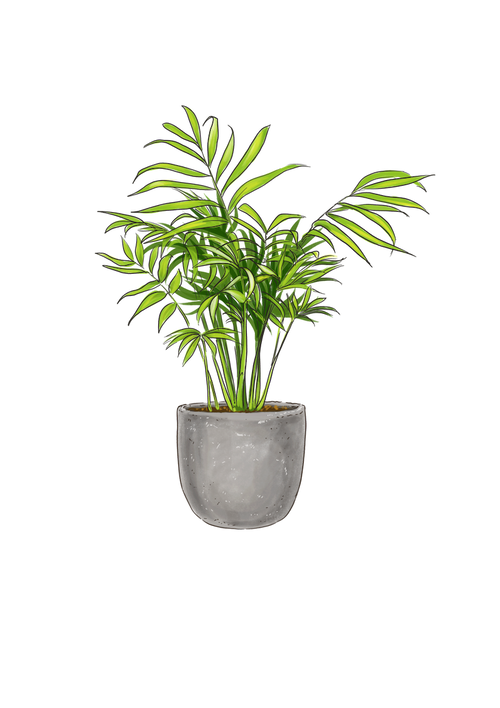Welcome
You have points
Recently viewed
No recently viewed items
Wishlist
Sign in to access your favorites

Prefers medium levels of indirect light.
Water well and then allow the soil to dry out between each watering.
Enjoys humidity. Spritz occasionally.
Keep this plant on the warmer side and avoid cold drafts below 50°F or it could slow their growth.
Outside: Keep them in full shade on a patio out of direct sunlight to prevent leaf burn where nights are above 50°F.
Apply a slow release fertilizer to the soil surface and as you water, the nutrients will release. Replenish as needed. Follow this fertilizing in the spring and summer months and slow down during the fall and winter time.
When receiving the Neanthe Bella Palm, do not repot immediately but wait at least 6-12 months or if the roots are beginning to get crowded and growing through the drainage holes.
Repot in the spring, using a 2 inches bigger pot to give the roots room to spread.
Place a piece of screening at the bottom of the container over the drainage hole to secure the soil and allow to drain. Use a rich, well-draining indoor potting mix amended with 25% compost and to help with fertility.
Water your plant in the old pot before transferring over and let sit an hour.
Add well-draining potting soil amended with perlite and rooting hormone to the bottom to elevate the root ball. Lift the plant and release the roots against the existing planter. Use a clean knife or garden trowel to wedge between the pot and the soil to loosen.
Inspect the root ball. Notice if there are any dead or rotting roots and trim off with sterile pruners. If the plant is rootbound, cut through the roots to alleviate continued encircling.
Ensure the plant is sitting about 1 inch below the edge of the pot to avoid water spillage. Add more soil and backfill around the sides by tamping down. Fill up to the soil line but not over.
Water thoroughly, and if settling occurs, add more soil.
Water well to dampen the soil and let drain.
When watering your palm, it is an excellent time to trim off any browning, yellowing, or discolored leaves. If tips of the leaves are browning, trim the ends off to help the plant regain strength. Remove any debris from the soil and replenish if needed. To clean debris and dust off the leaves:
Place the palm in a shower or tub.
Fill a watering can with a shower spout with filtered, bottled, or water free of chlorine and fluoride.
Shower the leaves, so each one is clear of dust and dirt.
Let the water drain and replace your palm in the decorative container.
To propagate your Neanthe Bella Palm:
Water your plant the night before dividing.
Inspect your plant for overcrowding. If it is root-bound in the pot, loosen the dirt around the root clump and brush away the soil.
Begin to tease and pull apart the mass of roots.
Ensure you have several healthy stalks and leaves attached to the clumps.
Divide each clump into its pot, measuring 2 inches wider than the root mass and deep enough for its roots to grow.
Plant in well draining potting mix amended with rooting hormone. Place the plant at the same level as the previous pot adding soil at the bottom. Water the soil and add more if settling occurs. Set it in medium, indirect sunlight.
Check the moisture and humidity each day and add misting to keep the soil moist while the roots establish. After 6-8 weeks, roots will begin to develop. You can tug onto the stem to ensure the roots are anchoring well.
Keep the air humid around it with a pebble tray and misting.
Some die off of stems may occur from transplant shock. If this happens, cut the branches away and continue to hydrate, and keep the humidity level at a medium level while it recovers. Adding a rooting hormone during planting will help diminish the symptoms of transplant shock.